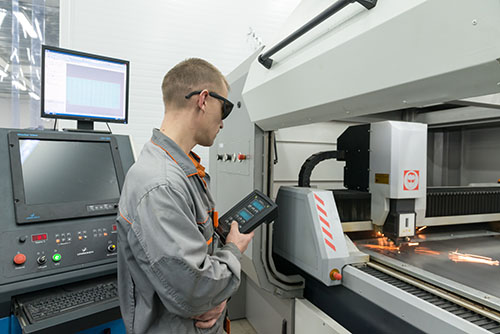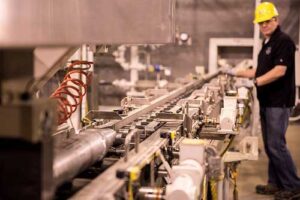The manufacturing sector is one where job growth is a strained situation. Manufacturing companies are having a hard time filling the positions needed. And, with the growth seen in this sector, it will mean more jobs available. We’ve seen positive changes such as tax reform and lower unemployment over the past year. These changes are making it even harder to fill job openings. Moving into 2019, the manufacturing skills gap needs to be top of mind. This year, companies need to be looking for ways to deal with job growth that will meet their needs.
Positive Changes
The current data on job analysis provides a positive outlook for 2019. Job growth is on the rise and the need for blue-collar workers and manual labor is at an all-time high. Sectors that haven’t seen wages raised in years are now looking at increased pay. Factories are hiring more workers and are producing more goods. But how will these changes effect manufacturing, particularly when it comes to employment?
Qualified Workers Are Scarce
The skills gap is one reason filling manufacturing positions has become difficult. Many sectors, such as the construction industry, need blue collar workers. But the need for workers with a narrow skill set is declining. Companies are looking for employees with broader skill sets. These workers are able to cross over from niche areas into the more current Industrial 4.0 skills.
Not only are workers scarce that have the desired skill sets but an aging workforce is part of the problem. Throw in the fact that drug use is also decreasing the worker pool and you have a serious problem. How can companies handle the manufacturing skills gap?
Automation Can Help
Enter robotics and automation. Almost every manufacturing company could automate some jobs. Also, they are almost certain to have jobs that can’t be filled by a machine. Then, actual workers can take on reasoning and leadership positions. Automation is the future, and it doesn’t mean fewer jobs for people as is often thought. It means using workers where they’re most needed.
Apprenticeship Programs
Apprenticeship programs have had excellent results in Germany for decades. America is finally grasping the need for good apprentice training. Manufacturing companies are working with colleges and starting apprenticeship training programs. These programs are making inroads into a solid future for their company. As a result, a younger well trained workforce, with the needed skills, is ready to enter the job field.
Retraining Workers
Another way to handle the skills gap is to provide retraining programs. This could include pulling from current employees with the business, or the unemployed. Training could entail adding digital and computer training into what they already know. With a bit of “retooling”, these workers could have the skills to be ready for Industry 4.0.
2019 Is Looking Strong
Manufacturing companies will make a huge difference in 2019. It’s looking to be a strong year. However, this remains true if businesses can meet the manufacturing skills gap challenge. Meeting these challenges head on will mean more jobs within the U.S. and solid business growth.
Automation – Filling the Gap in the Manufacturing Job Market
Automation and the direction it’s heading in manufacturing is often put out as a doom and gloom situation. ‘Robotics will bring an end to the need for actual human workers’ is what is being stated. But is that really the case? Or will automation open up a whole new arena for workers? And what does it mean for how current manufacturing jobs are being filled? The current situation could have a huge impact on what happens in the future with automation in manufacturing and the job market.
Changes in the Playing Field
Companies are currently having difficulty finding enough employees to meet their manufacturing needs. While that seems to be at odds with the number of people needing jobs there are several reasons behind the problem. One of those is an aging work population. According to the Bureau of Labor Statistics, the average age of half of all manufacturing workers was 45, and half as many of those were 55 or older in 2016. Retirement is closing in and there are no young workers stepping up to replace them. This is a critical issue for the future of manufacturing.
Drug problems are another major factor when it comes to employable men. Opioid use is wiping out a high percentage, as much as 25%, of what would be reliable, younger workers. Lack of skills is another contributor. Leadership and decision making skills, along with a broader array of adaptable skills, are sadly lacking in the training of young people today.
Automation Can Fill the Gap
Faced with a worker shortage, automation can help fill the gap. Jobs that are mundane, tedious and repetitive can often be replaced or enhanced by automation. As automation increases, areas such as data gathering can be automated. Automation can also free up current workers to be better utilized in other areas where automation isn’t possible. Companies are going to have to become innovative and think outside the box to make these things happen. The need for implementation and planning is immediate as many businesses are already in a labor crisis.
Automation in manufacturing at a much broader level is coming. Using it to meet your manufacturing needs calls for a business with a dedicated team that can come up with a sound strategy for the future—one that helps fill the current labor shortage and one that will create jobs as employees move from one position that’s automated, to another.
Moving Into the Future
Businesses simply cannot wait to make changes. They aren’t going to happen overnight so the planning has to begin now, especially those who are currently in need of workers. Here are some things to consider:
- Access Your Needs – Determine what areas you can use automation to downsize your need for workers and increase productivity.
- Training Programs – Consider implementing training programs that can retrain current employees to move into more skilled areas.
- Create New Job Titles – As you increase automation, where can you add job titles? Productivity increases with automation. How can you take advantage of that to add more diverse jobs and creativity to what you do?
- Consider Apprentice Training – How can your company work to develop an apprenticeship program that will train young workers as skilled workers of the future?
Automation can be the key to both fulfilling your current labor need and increasing the manufacturing job market in the future. As your need for automated manufacturing processes change we are here to help. Radley can help your business run as “lean” as possible.
Streamline processes and automate workflows to meeting the challenges of 2019. Get started with solutions like directed picking, bar code data collection, or EDI. Contact a Radley product specialist today for your free consultation.


